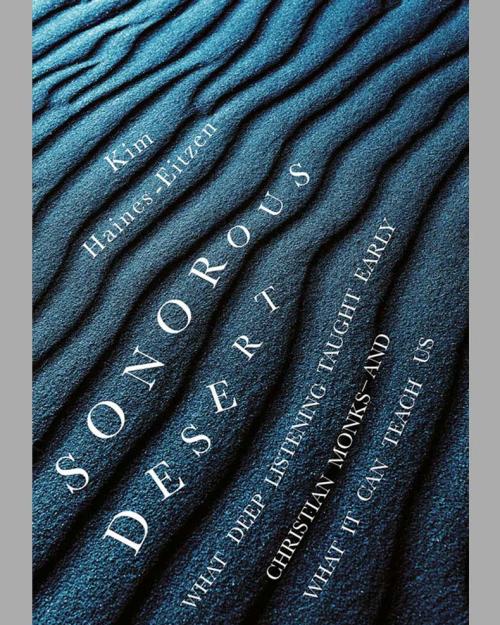For anyone frustrated by the constant churn of modern life, the desert may seem like a quiet refuge, a place to get away from the clamor of it all. But deserts are not only extreme and isolated environments – they can be noisy ones, too, as early Christian monks discovered when they first trekked into the deserts near Israel and Egypt in search of a quiet spot for contemplation nearly 1,700 years ago.
In her new book, “Sonorous Desert: What Deep Listening Taught Early Christian Monks – and What It Can Teach Us,” published July 12 by Princeton University Press, Kim Haines-Eitzen, the Paul and Berthe Hendrix Memorial Professor of Near Eastern Studies in the College of Arts and Sciences, explores the rich range of sounds that blow and buzz and trickle and chirp through the desert – and what they can teach us about place, the past, solitude and community.
Haines-Eitzen spoke with the Chronicle about the book.
Question: Most people, if asked for their top travel destination, would probably not say “the desert.” What is it about the desert that you find so fascinating?
Answer: Deserts have long held fascination for the religious imagination and ritual practice. They are regions of extremes – heat and cold, drought and flash floods, danger and safety, quiet and noise, life and death. In the history of early Christianity and early Judaism, deserts were the places where key events happened – stories of revelations, transfigurations, temptations and migrations in the desert abound in the biblical narratives. It’s especially fascinating to consider the relationship between the real and imagined desert in these stories and the ones that followed in subsequent centuries.
Q: Why was the desert such an important location for early Christian monks? And what role did sound play in their experiences?
A: By the time early Christian monasticism developed in the third and fourth centuries, the desert already had a storied history. Early Christian monks saw the desert – which could simply mean a cave or canyon just beyond the walls of a city – as a place filled with danger and temptation. And this idea inspired their resolve to live as monks in a harsh environment. As for sound: a surprising feature of early Christian monastic texts is that they speak almost continuously about the importance of silence and yet the stories about monks also complain about noise and acoustic distractions in the remote desert.
Q: How would you characterize the “silence” of the desert? What are the range of sounds that you can hear, and how much do these sounds vary from desert to desert, continent to continent?
A: The silence of the desert is less about absence, in my view, than it is about a subtle and varied fullness of quiet. But even this doesn’t quite capture the range of sounds I’ve found in desert environments – and the range of sounds talked about in late-ancient monastic texts. One of the things that surprised me in my research is that although each desert has its distinctive acoustic particularities, there are sounds that are shared by many deserts across different continents: wind, flies and other insects, ravens and doves, the ephemeral sources of water, and almost always the sounds of humans.
Q: What have you learned by making your own field recordings?
A: Making field recordings taught me how to listen. And how to read the early Christian monastic texts with a heightened attention to sound. After taking the Cornell Lab of Ornithology’s Natural Sound Recording Workshop, I worked hard to develop my field recording skills in order to produce a set of desert environmental recordings to accompany “Sonorous Desert.” It wasn’t my intention to show readers and listeners exactly what the ancient monastic desert sounded like, but rather to open up a conversation between the past and present through listening.
Q: What were some of the deserts you visited? Which impacted you the most, and why?
A: I conducted research in the Negev and Judean deserts of southern Israel and in the four North American deserts (Sonoran, Mojave, Great Basin and Chihuahuan). Each one of them gave me new understandings of the early Christian monastic movement. In Israel it is possible to visit monasteries that are 1,500 years old, in some cases even older. They have changed over time, of course, but to walk through the contours of a desert wadi and to hear the sounds of pilgrims arriving at the monastery makes vivid and tangible the stories of monks from long ago. Above all, my experiences helped me understand the environment as a teacher, how place can impact our sense of the world, and how sound shapes a sense of who we are.
Q: Your introduction notes that civilizations 2,000 years ago relied more on the oral tradition. Now we find ourselves in a world that is text- and screen-based. What do you think that transition has meant for the human imagination – or, more broadly, our interior life?
A: This is a tough question and I don’t think there are any easy answers. On the one hand, technological developments do bring social and environmental changes; on the other hand, the monastic quest for silence and solitude in the ancient world shares many similarities with those who seek these same experiences in our contemporary world. The frustrations with interruptions and distractions seem quite similar. Practices designed to focus one’s attention, slow down the pace of life, cultivate inner quiet in the midst of noise were developed partly in response to these frustrations. Early Christian monasticism built upon insights from ancient philosophy about nurturing concentration in the midst of a chaotic and noisy world.
Read the story in the Cornell Chronicle.




